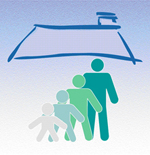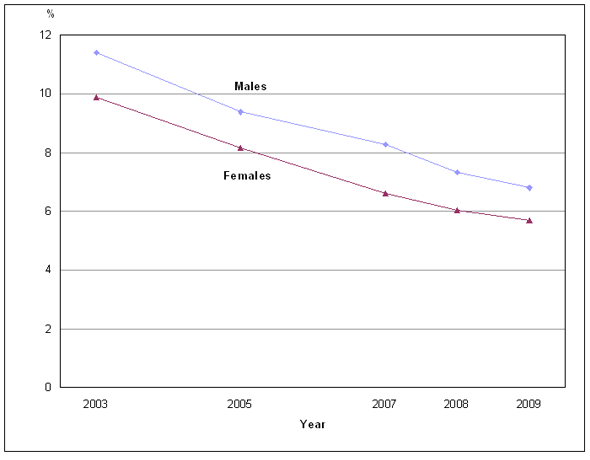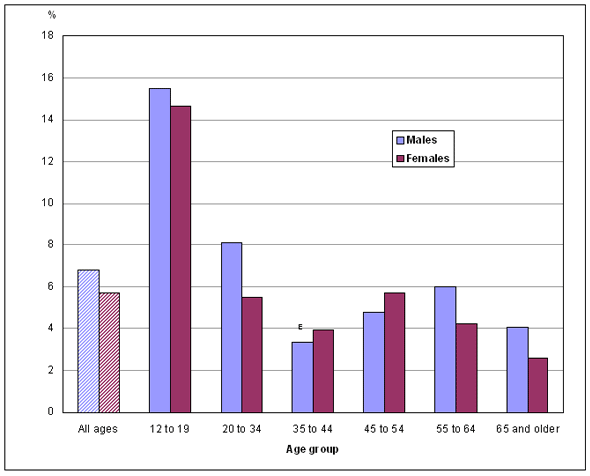Exposure to second-hand smoke at home, 2009
Archived Content
Information identified as archived is provided for reference, research or recordkeeping purposes. It is not subject to the Government of Canada Web Standards and has not been altered or updated since it was archived. Please "contact us" to request a format other than those available.

'Passive smoking', or exposure to second-hand smoke, has negative respiratory health effects. Two of the most common associated diseases are lung cancer in adults and asthma among children.
From 2008 to 2009, the proportion of non-smokers aged 12 and older who were regularly exposed to second-hand smoke at home remained relatively stable, settling at 6.2% in 2009. The rate had steadily declined since 2003.
A higher percentage of men than women were exposed to second-hand smoke at home (Chart 1).
Chart 1
Percentage of non–smokers regularly exposed to second–hand smoke at home, by sex, household population aged 12 and older, Canada, 2003 to 2009

Source: Canadian Community Health Survey, 2003, 2005, 2007, 2008 and 2009.
In 2009, exposure to second-hand smoke at home was highest among 12– to 19–year–olds. The exposure rate for 20– to 34–year–olds matched the national average; all other age groups posted rates below the national average. Men were significantly more likely than women to be exposed to second-hand smoke at home for the 20– to 34–year–olds and those aged 65 and older (Chart 2).
Chart 2
Percentage of non–smokers regularly exposed to second–hand smoke at home, by age group and sex, household population aged 12 and older, Canada 2009

Note: E Use with caution (coefficient of variation 16.6% to 33.3%).
Source: Canadian Community Health Survey, 2009.
From 2008 to 2009, the percentage of people exposed to second–hand smoke at home remained the same in most age groups—except the 65–and–older range, where it declined.
Only Ontario, 5.3%, and British Columbia, 3.6%, posted rates of exposure to second–hand smoke at home that were below the national average. Quebec, at 9.2%, and Yukon, at 12.0%—which should be interpreted with caution—were above the national average.
References
Shields, Margot. 2007. "Smoking—prevalence, bans and exposure to second-hand smoke." Health Reports, 18(3): 67–85. /pub/82-003-x/2006007/article/smoking-fumer/10198-eng.pdf (accessed June 3, 2010)
Pérez, Claudio E. 2004. "Second-hand smoke exposure—who's at risk." Health Reports, 16(1): 9–17. /studies-etudes/82-003/archive/2004/7037-eng.pdf (accessed June 3, 2010)
Data
Additional data from the Canadian Community Health Survey are available from CANSIM table 105–0501.
- Date modified:
